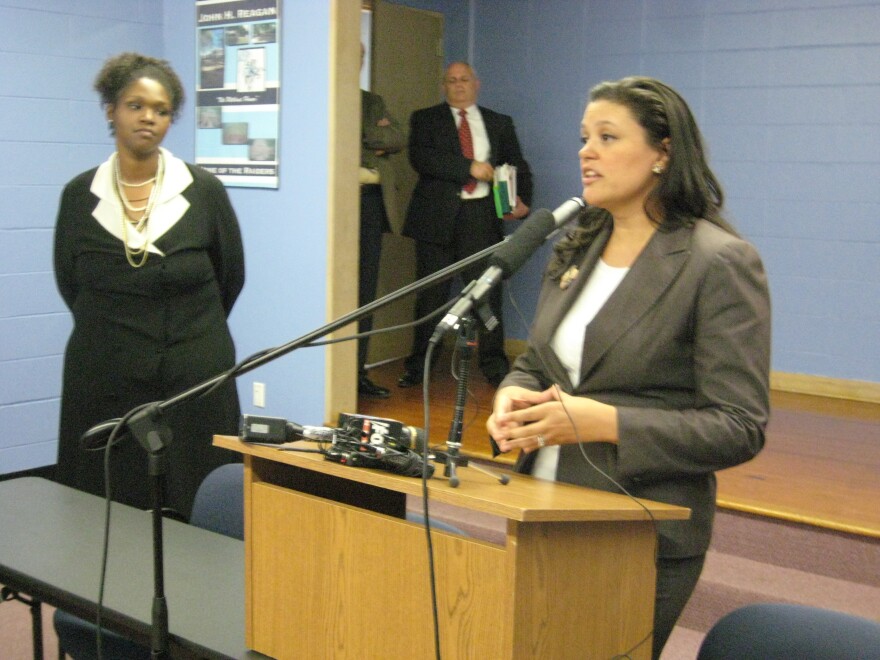Superintendent Meria Carstarphen will be out in public again this evening with her financial chief, Nicole Conley-Abram, trying to explain the school district's budget situation and take input from the public. Tonight's "community conversation", as the school district calls it, starts at 6:30 pm inside the Bowie High School Cafeteria at 4103 Slaughter Lane.
People who attended last week's public forum at Reagan High School had more questions than answers when it came to AISD's projected $94 million deficit. Most of the ten or so people who spoke at a microphone during the public input portion of the meeting were there to talk about a proposal from charter school operator Southwest Key to lease the Eastside Memorial High School campus. But during the question and answer session, Carstarphen and Conley-Abram fielded many queries submitted in writing from the 100 or so audience members trying to make sense of the school district's financial crisis.
Tonight's meeting may include questions about an idea that has surfaced lately in discussions among school board members: a tax rate election to help fund the school district.
Local education consultants Moak, Casey, and Associates have prepared a statewide district-by-district printout projecting the impact of state cuts to public education under the House's proposed cuts of $3.9 billion per year for two years. It pegs the cost to Austin ISD between $76 and $186 million, a huge disparity that has school district officials worrying aloud about the disastrous implications of a potential budget gap twice as large as currently projected.
Here's how Moak, Casey and Associates explainthe two numbers provided for each district.
We have provided two examples of reductions totaling $3.9 billion per year. The first assumes an across-the-board reduction of state and local general fund revenue, an 11.3 percent reduction.. The second assumes formula changes to get to a $3.9 billion reduction per year, including the elimination of hold-harmless funding associated with the target revenue system (Additional State Aid for Tax Reduction), the elimination of the chapter 41 hold harmless, and a reduction to the basic allotment.
One comment making the rounds in education circles today comes from the former Republican Texas Lieutenant Governor Bill Ratliff. The Mount Pleasant Daily Tribune reports that Ratliff told a group of public officials, parents, students, and Tea Party members that Texas should use more of the Rainy Day fund to close the budget gap.
Bill Ratliff said the rainy day fund could be a way for the state to keep the school districts from taking such a large hit in funding. “The rainy day fund, has grown by $2 billion a year, so let’s assume the senate decided to use $9 billion dollars from that rainy day fund, in two years it would be back. The money that goes into the rainy day fund comes off of oil and gas revenues that are paid to the State of Texas.” According to Bill Ratliff, the rainy day fund “was started when oil was at $10-15 dollars, it’s at $100 now.” “That is why that fund is growing at $2 billion a year. By the time the biennium is up there will be another $4 billion,” Bill Ratliff said. “But I don’t hear anybody talking about that, and I am curious why not.”
The Texas Tribune's Morgan Smith also has this explainer on the state's school finance system. It's a dense read, but provides crucial background to understanding the issue.






